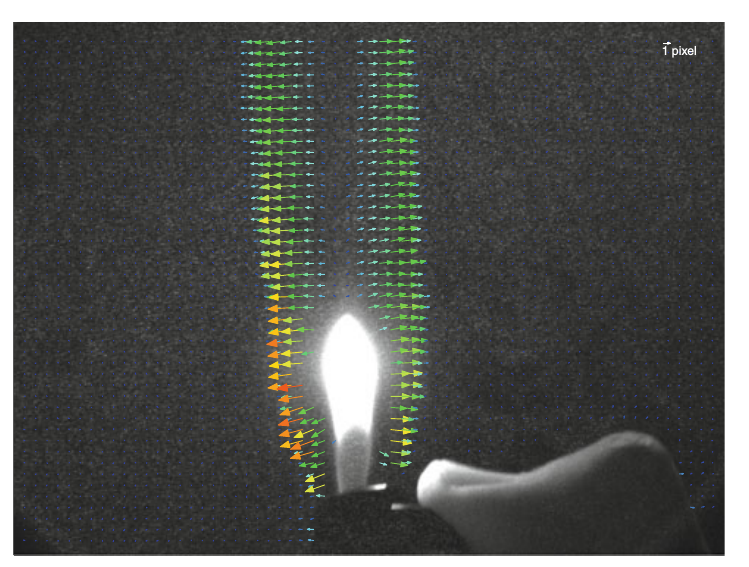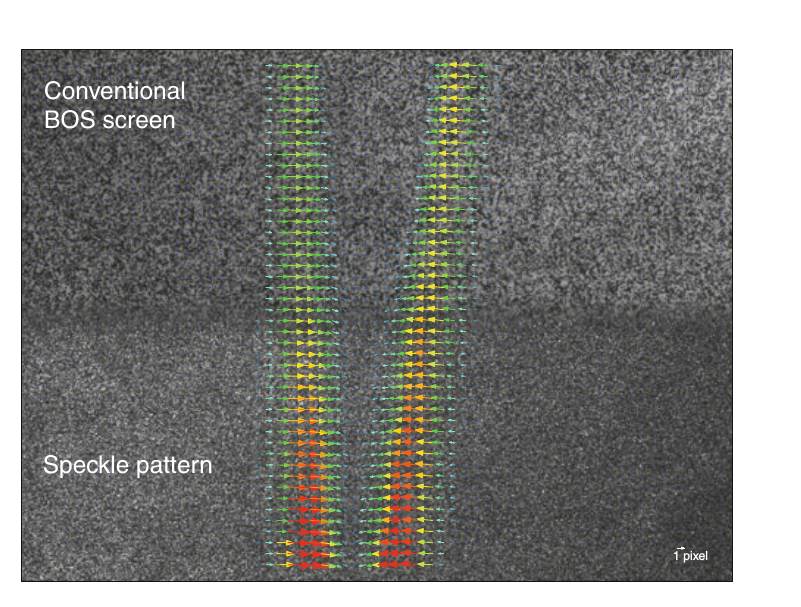Speckle-based Background Oriented Schlieren
Philipp Bühlmann, Alexander Meier, Thomas Rösgen
General Description
The "Background Oriented Schlieren" method (BOS) has been established in recent years as a comparatively simple method for visualizing and analyzing variable density flows. A novel variant of the BOS technique is under development at IFD which replaces the required physical background pattern by a laser-generated speckel field. The arrangement decouples the achievable sensitivity from the placement constraint on the reference screen, facilitating the design of compact, high-sensitivity configurations.
Theory
In conventional BOS, the camera has to be focused onto the background pattern, which means it usually cannot be focused on the flow fieldmin the test section at the same time.mWith speckle BOS, the constraint is lifted because the speckle patternmis always "focused" independent of the actual lens focus. This is due to the fact that speckle is an interference phenomenon created on themsensor surface, not on the reflecting backgound structure. The figure shows an example where the test volume (i.e. the plume above a lighter flame) is kept in focus, while the speckle pattern visible in the background is used to compute the density gradient field (visualized as vector map following a PIV-style displacement analysis).
A further demonstration of the potential of the speckle BOS technique is givenin the figure below. Here, the plume is imaged simultanously with a conventional BOS setup (upper half, using a printed dot pattern) and the speckle arrangement (lower half). The measured pattern displacements fit together seamlessly. However, the conventional BOS background had to be placed 11 meters away from the flow field, whereas the speckle screen (a diffuse, featureless reflector) was placed only 0.1 meters behind the flow, significantly simplifying the overall experimental arrangement.
Application
As a first application, the speckle BOS technique will be used to study the so-called backlayering phenomenon which may occur during fires in tunnels with longitudinal ventilation. Here, the proximity of the relevant flow domains to solid, opaque walls makes the application of conventional BOS configurations difficult.


